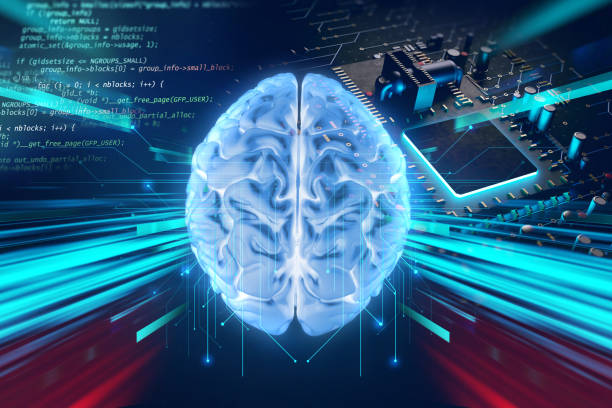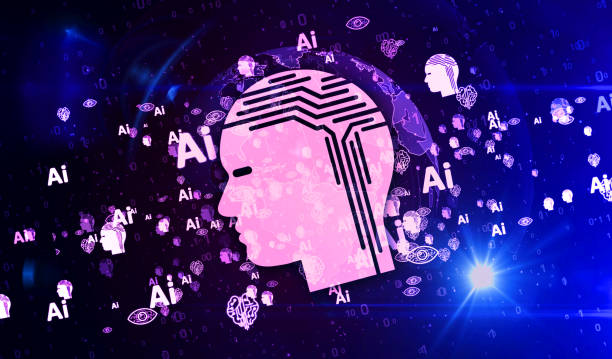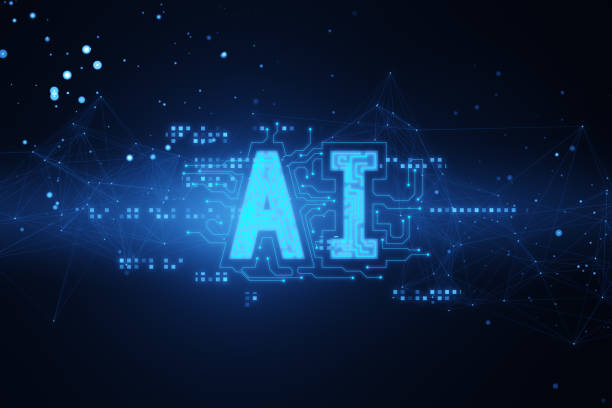What is Artificial Intelligence? Definitions and Basic Concepts

#Artificial_Intelligence (AI) is, in short, the ability of a computer system to mimic human cognitive functions such as learning, problem-solving, and decision-making.
In fact, the main goal of #Artificial_Intelligence is to create machines that can perform tasks currently performed by humans, automatically and intelligently.
This field has several branches, including Machine Learning, Natural Language Processing, Computer Vision, and Robotics.
Each of these branches focuses on specific aspects of human intelligence and seeks to develop algorithms and systems that can mimic these aspects.
For example, machine learning allows machines to learn from data and improve their performance without explicit programming.
Natural language processing allows machines to understand and produce human language.
Computer vision allows machines to see and interpret images.
And robotics allows machines to move in and interact with the physical world.
In a more specialized definition, artificial intelligence can be divided into two general categories: Narrow AI and General AI.
Narrow AI is designed to perform a specific task and performs very well in that task, but is unable to perform other tasks.
For example, a facial recognition system or a chess playing program are examples of Narrow AI.
In contrast, General AI refers to a machine that can perform any intellectual task that a human can perform.
Currently, General AI is still in the early stages of development and no strong AI systems exist.
Is your company’s website performing as it should for your brand? In today’s competitive world, your website is your most important online tool. Rasaweb, a specialist in designing professional corporate websites, helps you to:
✅ Attract customers’ trust and credibility
✅ Convert website visitors into customers
⚡ Get a free consultation!
The History of Artificial Intelligence from Alan Turing to Today

The history of artificial intelligence dates back to the 1950s, when Alan Turing, a prominent mathematician and computer scientist, proposed the Turing test.
This test provides a measure to assess the intelligence of a machine.
In 1956, a conference was held at Dartmouth College, which is known as a turning point in the history of artificial intelligence.
At this conference, prominent researchers such as John McCarthy, Marvin Minsky, and Claude Shannon gathered and explored the possibility of building machines with intelligence similar to humans.
In the 1960s and 1970s, research in the field of artificial intelligence was pursued with great enthusiasm.
Researchers hoped that they would soon be able to build machines capable of solving complex problems and performing intelligent tasks.
However, progress in this area was slower than expected and many promises were not fulfilled.
This period is known as the “AI winter” because research funding in this area was reduced and interest in artificial intelligence waned.
In the 1980s and 1990s, with significant advances in hardware and algorithms, artificial intelligence was again in the spotlight.
The development of machine learning algorithms such as neural networks and genetic algorithms made it possible to build systems that could learn from data and improve their performance.
In the 2000s, with the emergence of Big Data and the increasing processing power of computers, artificial intelligence advanced rapidly.
Deep Learning algorithms, based on deep neural networks, were able to achieve very good results in many areas, such as image recognition, speech recognition, and natural language processing.
Today, artificial intelligence is present in many aspects of our lives and is changing the world.
Diverse Applications of Artificial Intelligence in Various Industries
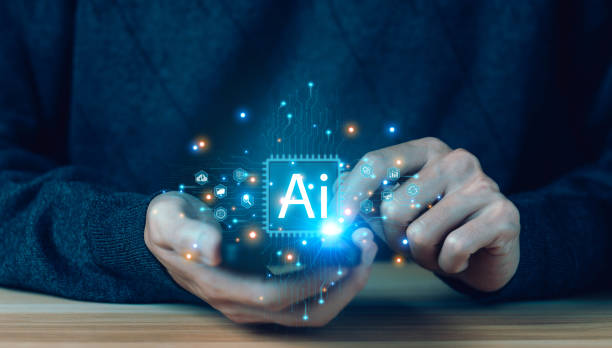
#Artificial_Intelligence currently has wide applications in various industries and is rapidly evolving.
In the healthcare industry, #Artificial_Intelligence is used to diagnose diseases, develop new drugs, and personalize treatments.
For example, #Artificial_Intelligence systems can analyze medical images with high accuracy and detect early signs of cancer.
In the financial industry, #Artificial_Intelligence is used to identify fraud, manage risk, and provide advisory services to customers.
#Artificial_Intelligence systems can identify unusual patterns in financial transactions and prevent fraud.
In the manufacturing industry, #Artificial_Intelligence is used to optimize production processes, control quality, and predict equipment failure.
#Artificial_Intelligence systems can analyze data from various sensors and identify potential problems before they occur.
In the transportation industry, #Artificial_Intelligence is used to develop self-driving cars, optimize routes, and manage traffic.
Self-driving cars, using sensors and #Artificial_Intelligence algorithms, can move on the roads without the need for a human driver.
In the education industry, #Artificial_Intelligence is used to personalize education, provide feedback to students, and develop intelligent educational systems.
#Artificial_Intelligence systems can identify the strengths and weaknesses of each student and adjust the educational content based on their needs.
These are just a few examples of the diverse applications of #Artificial_Intelligence in various industries.
With further advances in this field, #Artificial_Intelligence is expected to play a more important role in our lives.
Machine Learning: The Backbone of Artificial Intelligence

Machine Learning is one of the most important branches of artificial intelligence and allows machines to learn from data and improve their performance without explicit programming.
In fact, machine learning is a set of algorithms and techniques that allow machines to identify patterns and relationships in data and, based on these patterns, make intelligent predictions and decisions.
Machine learning is divided into three main categories: Supervised Learning, Unsupervised Learning, and Reinforcement Learning.
In supervised learning, the machine is trained using labeled data.
This data includes inputs and expected outputs, and the machine tries to learn the relationship between the inputs and outputs.
After training, the machine can be used to predict new outputs based on new inputs.
In unsupervised learning, the machine is trained using unlabeled data.
In this case, the machine tries to identify hidden patterns and structures in the data.
Unsupervised learning can be used for clustering data, reducing data dimensions, and detecting anomalies.
In reinforcement learning, the machine learns how to optimize a specific goal by interacting with an environment.
The machine receives rewards or penalties for taking different actions in the environment and tries to learn a strategy that earns the most reward.
Reinforcement learning is used in various fields such as robotics, computer games, and system control.
Are you dissatisfied with the low conversion rate of visitors to customers on your online store?
Solve this problem forever with a professional online store design by Rasaweb!
✅ Significantly increase conversion rate and sales
✅ Create an excellent user experience and build customer trust
⚡ Get a free consultation
Natural Language Processing: Human-Machine Interaction
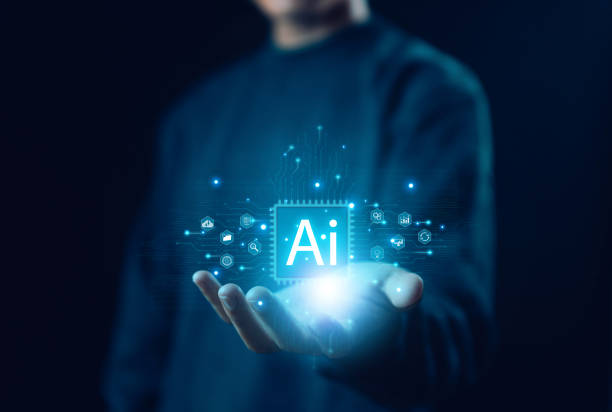
Natural Language Processing (NLP) is a branch of artificial intelligence that allows machines to understand and produce human language.
The main goal of natural language processing is to create systems that can interact with humans in natural language and perform tasks such as machine translation, text summarization, question answering, and sentiment analysis.
Natural language processing includes a set of techniques and algorithms that are used to analyze and process the structure and meaning of human language.
These techniques include syntactic analysis, semantic analysis, and natural language generation.
Syntactic analysis examines the grammatical structure of sentences and identifies the relationships between words.
Semantic analysis examines the meaning of words and sentences and tries to understand the overall meaning of the text.
Natural language generation deals with the process of producing meaningful and grammatically correct sentences.
Natural language processing is used in various fields, including machine translation, virtual assistants, search engines, and question answering systems.
With further advances in this field, machines are expected to be able to interact increasingly with humans in natural language and play a more important role in our lives.
For example, machine translation systems like Google Translate use natural language processing to translate texts from one language to another.
Ethical and Social Challenges of Artificial Intelligence

With the expansion of the applications of artificial intelligence, many ethical and social challenges have also arisen.
One of the most important of these challenges is the issue of discrimination and inequality.
Artificial intelligence algorithms, if trained with incomplete or biased data, can make discriminatory decisions and exacerbate existing inequalities in society.
For example, a facial recognition system, if not trained with enough data from faces of people with colored skin, may not be able to recognize these people correctly.
Another challenge is the issue of privacy.
Artificial intelligence systems need a large amount of data to function properly, which may include personal information of individuals.
Collecting and using this information can lead to a violation of people’s privacy.
For example, a movie recommendation system, if it collects a lot of information about people’s tastes and interests, may be able to obtain detailed information about their personal lives.
The third challenge is the issue of accountability.
If an artificial intelligence system makes a wrong decision and causes damage, it is difficult to determine responsibility for this damage.
For example, if a self-driving car causes an accident, is the driver, the car manufacturer, or the developer of the artificial intelligence algorithm responsible for this accident? The fourth challenge is the issue of job loss.
With the advancement of artificial intelligence, many jobs that are currently performed by humans may be automated by machines.
This can lead to increased unemployment and economic inequality.
To address these challenges, it is necessary to establish appropriate laws and regulations and ensure the ethical and responsible development and use of artificial intelligence.
The Future of Artificial Intelligence: What Expectations Should We Have?

The future of artificial intelligence is very bright and full of potential.
It is expected that in the coming years, artificial intelligence will play a more important role in many aspects of our lives and create profound transformations in various industries.
One of the most important future trends of artificial intelligence is the development of General AI.
Although General AI is still in the early stages of development, many researchers believe that in the not-so-distant future, we will be able to build machines that are capable of performing any intellectual task that a human can perform.
The development of strong artificial intelligence can create huge changes in society and help solve many complex problems.
Another trend is the development of Trustworthy AI.
With the expansion of the applications of artificial intelligence, trust in artificial intelligence systems becomes more important.
In order for people to trust artificial intelligence systems, these systems must be reliable, transparent, and accountable.
The development of reliable artificial intelligence requires the joint efforts of researchers, policymakers, and society.
In addition, artificial intelligence is expected to create profound transformations in various fields such as health care, education, transportation, and manufacturing, and help improve the quality of human life.
| Technology | Description |
|---|---|
| Deep Learning | Algorithms with deep neural networks |
| Natural Language Processing | Understanding and production of human language by machines |
| Computer Vision | The ability to see and interpret images |
Artificial Intelligence and the Fourth Industrial Revolution
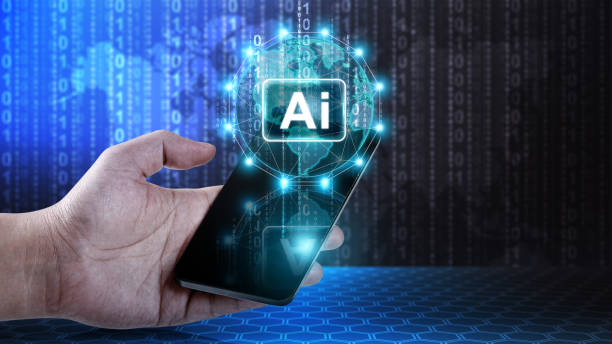
Artificial intelligence is one of the main pillars of the Fourth Industrial Revolution (Industry 4.0).
The Fourth Industrial Revolution refers to the integration of digital, physical, and biological technologies and aims to create intelligent and automated production systems.
#Artificial_Intelligence, with its abilities in learning, problem-solving, and decision-making, plays an important role in realizing the Fourth Industrial Revolution.
In smart factories, #Artificial_Intelligence is used to optimize production processes, control quality, and predict equipment failure.
#Artificial_Intelligence systems can analyze data from various sensors and identify potential problems before they occur.
In the smart supply chain, #Artificial_Intelligence is used to optimize routes, manage warehouses, and predict demand.
#Artificial_Intelligence systems can analyze various data and determine the best routes for transporting goods.
In smart logistics, #Artificial_Intelligence is used to automate warehousing and distribution processes.
Robots equipped with #Artificial_Intelligence can move goods in warehouses and pack orders automatically.
The Fourth Industrial Revolution, using #Artificial_Intelligence, can lead to increased productivity, reduced costs, and improved quality of products and services.
Also, this revolution can help create new job opportunities in areas related to #Artificial_Intelligence and digital technologies.
Is the current design of your online store causing you to lose customers and sales?
Rasaweb is your solution with modern and user-friendly online store designs!
✅ Significantly increase conversion rates and sales
✅ Create strong branding and gain customer trust
⚡ Get a free online store design consultation from Rasaweb!
How Can We Learn Artificial Intelligence?

Learning artificial intelligence is a multi-step process that requires effort, perseverance, and the use of appropriate resources.
The first step to learning #Artificial_Intelligence is to become familiar with the basic concepts of mathematics and computer science.
To understand #Artificial_Intelligence algorithms, you need to be familiar with concepts such as linear algebra, calculus, statistics, and probability.
Also, to implement #Artificial_Intelligence systems, you need to be familiar with programming languages such as Python, Java, and C++.
After getting familiar with the basic concepts, you can start learning #Artificial_Intelligence algorithms.
For this purpose, you can use online courses, books, and scientific articles.
Online courses usually provide an overview of #Artificial_Intelligence algorithms and help you become familiar with key concepts.
Books usually provide more detailed descriptions of #Artificial_Intelligence algorithms and help you gain a deeper understanding of these algorithms.
Scientific articles usually provide the latest research in the field of #Artificial_Intelligence and help you stay up to date with the latest advances in this field.
After learning #Artificial_Intelligence algorithms, you can start implementing these algorithms.
For this purpose, you can use #Artificial_Intelligence tools and libraries such as TensorFlow, PyTorch, and scikit-learn.
These tools and libraries simplify the implementation of many #Artificial_Intelligence algorithms and help you quickly develop your own #Artificial_Intelligence systems.
Artificial Intelligence in Iran: Opportunities and Challenges
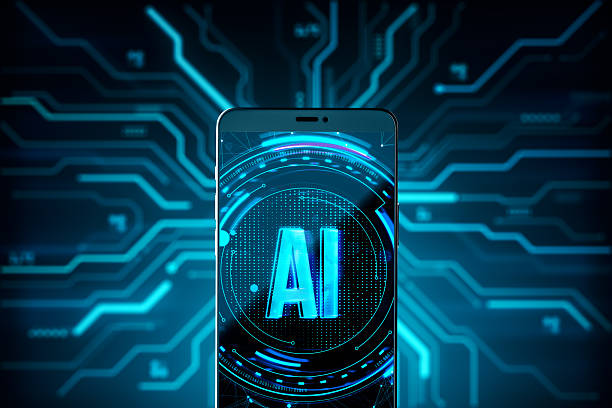
Artificial intelligence in Iran, despite numerous challenges, provides great opportunities for the development and progress of the country.
Iran, with its skilled and young workforce, has high potential for the development of artificial intelligence.
Many universities and research centers in Iran are active in the field of artificial intelligence and conduct valuable research.
Also, many start-ups in Iran are active in the field of artificial intelligence and offer innovative products and services.
However, the development of artificial intelligence in Iran faces many challenges.
One of the most important of these challenges is the lack of investment.
To develop artificial intelligence, we need large investments in research and development, infrastructure, and training.
Another challenge is the lack of quality data.
Artificial intelligence algorithms need a large amount of data to function properly.
In Iran, collecting and accessing quality data faces many obstacles.
The third challenge is the lack of specialized workforce.
Although Iran has a skilled and young workforce, the number of artificial intelligence specialists in Iran is not sufficient.
To solve these challenges, it is necessary for the government and the private sector to work together to develop and implement comprehensive plans for the development of artificial intelligence in Iran.
| Challenge | Description |
|---|---|
| Lack of Investment | Need for more investment in research and development |
| Data Scarcity | Limited access to quality data |
| Lack of Specialized Workforce | Need for training more specialists in the field of artificial intelligence |
Frequently Asked Questions
| Question | Answer |
|---|---|
| What is artificial intelligence? | It is a simulation of human intelligence in machines programmed to think like humans and imitate their actions. |
| What are the main branches of artificial intelligence? | They include machine learning, deep learning, natural language processing, computer vision, and robotics. |
| What is machine learning (Machine Learning)? | It is a branch of artificial intelligence that focuses on enabling systems to learn from data and identify patterns without explicit programming. |
| Give examples of artificial intelligence applications in our daily lives. | Voice assistants (such as Siri and Alexa), recommendation systems in Netflix and Amazon, self-driving cars, and facial recognition programs. |
| What is deep learning (Deep Learning)? | It is a subset of machine learning that uses multi-layered (deep) artificial neural networks to process large amounts of data. |
| What is Natural Language Processing (NLP)? | It is a branch of artificial intelligence that focuses on enabling computers to understand, interpret, and generate human language. |
| What are some ethical concerns related to artificial intelligence? | They include bias in data, privacy, job loss, and accountability in the event of errors. |
| What are the main benefits of artificial intelligence? | Increasing efficiency, improving decision-making, automating repetitive tasks, and discovering complex patterns in data. |
| How is artificial intelligence used in the field of health care? | In diagnosing diseases, discovering drugs, analyzing medical images, and providing personal care for patients. |
| How do you see the future of artificial intelligence? | It is expected to continue to evolve at a rapid pace, affecting all aspects of human life, from industry to education and entertainment. |
And other services of Rasa Web Advertising Agency in the field of advertising
Smart Marketplace: Designed for businesses looking to engage users through precise audience targeting.
Intelligent Conversion Rate Optimization: Professional optimization for online growth using intelligent data analysis.
Intelligent Website Development: A dedicated service for online growth based on custom programming.
Smart Google Ads: A professional solution for improving SEO ranking with a focus on optimizing key pages.
Smart Link Building: An effective tool for digital branding with the help of precise audience targeting.
And more than hundreds of other services in the field of internet advertising, advertising consulting and organizational solutions
Internet Advertising | Advertising Strategy | Advertisement Report
Resources
Analytical Artificial Intelligence Training
,What is analytical AI?
,What is Analytical Artificial Intelligence and What are its Applications?
,Analytical AI vs. Generative AI
? In the path of digital transformation of your business, Rasaweb Digital Marketing Agency, with expertise in professional website design and providing comprehensive solutions, is your trusted partner.
📍 Tehran, Mirdamad Street, next to the Central Bank, South Kazerun Alley, Ramin Alley No. 6

